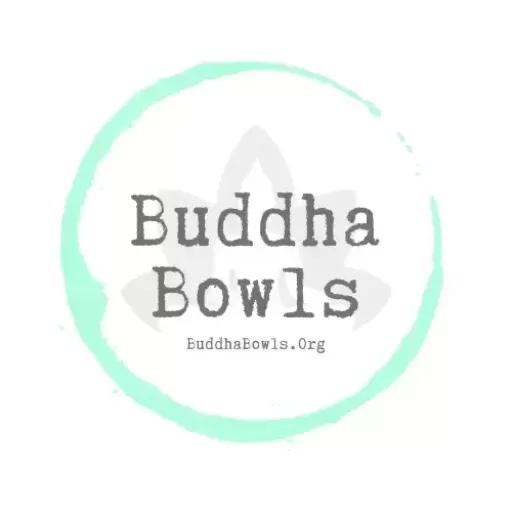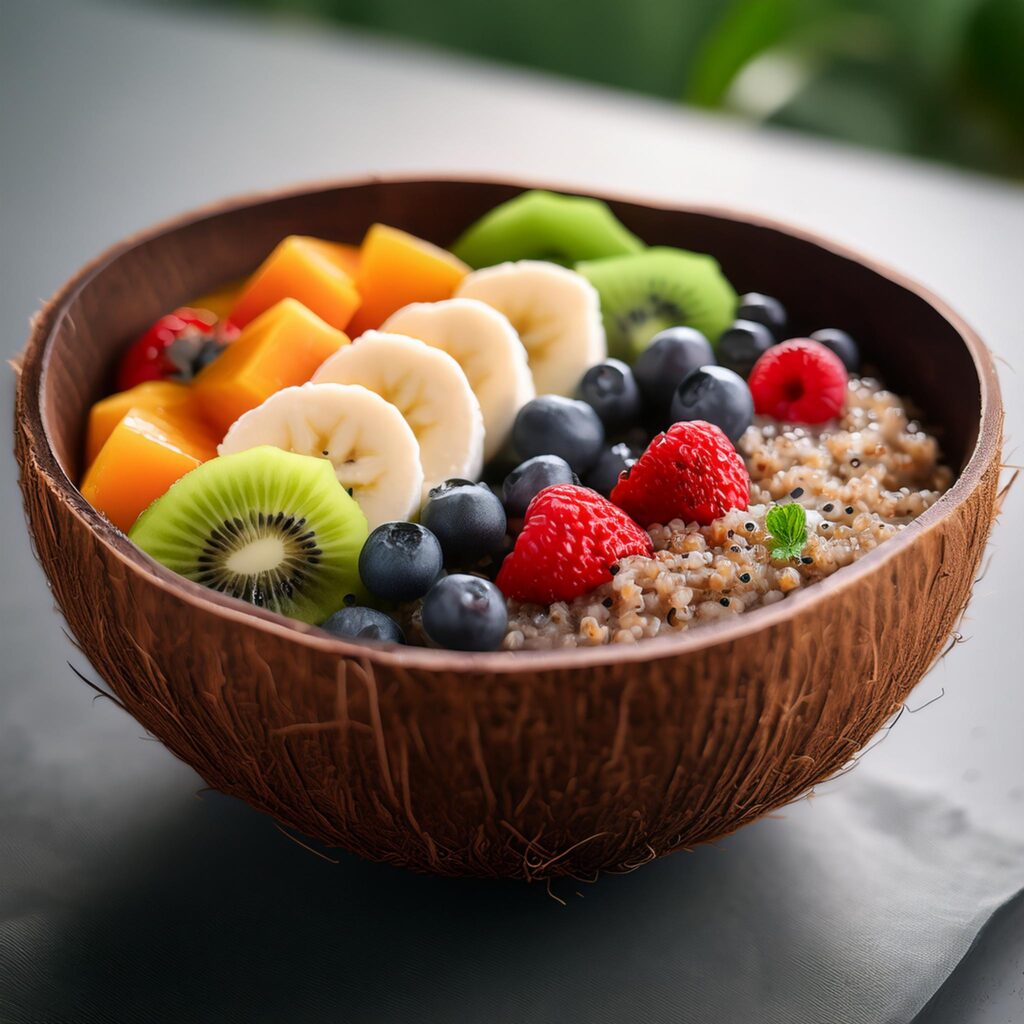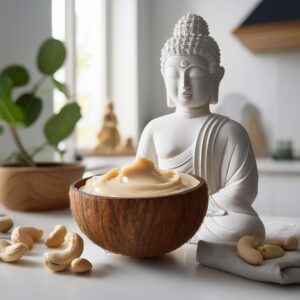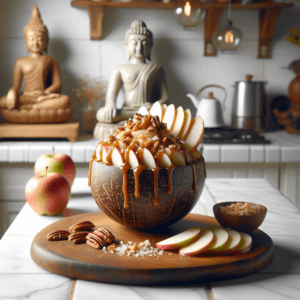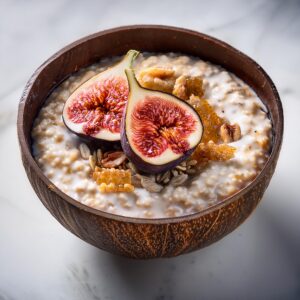Buddha Bowls vs. Grain Bowls: What’s the Difference?
If you’ve been scrolling through food blogs, Instagram, or even restaurant menus lately, you’ve probably come across the terms “Buddha bowl” and “grain bowl.” At first glance, they might look similar—vibrant, colorful bowls brimming with fresh ingredients. But are they the same thing? Not quite! While they share some commonalities, Buddha bowls and grain bowls have distinct characteristics that set them apart. Let’s dive in and explore what makes each of these bowls unique.
What Is a Buddha Bowl?
A Buddha bowl is more than just a meal—it’s an artful, balanced creation. Typically plant-based, Buddha bowls embrace wholesome, nutritious ingredients that come together in a beautifully arranged presentation. The name “Buddha bowl” is believed to reference the concept of balance and harmony, as well as the bowl’s resemblance to a rounded Buddha belly when filled to the brim.
Key Features of a Buddha Bowl:
- Plant-Based Ingredients: Traditional Buddha bowls are vegetarian or vegan, featuring a variety of fresh vegetables, leafy greens, legumes, nuts, seeds, and sometimes tofu or tempeh.
- Focus on Balance: The goal is to include a mix of flavors, textures, and nutrients—think crunchy raw veggies paired with creamy hummus or avocado.
- Minimal Processing: Ingredients are often raw or lightly cooked (like roasted veggies or steamed greens) to maintain their natural flavors and nutrients.
- Artistic Presentation: Buddha bowls are known for their Instagram-worthy appearance. Ingredients are thoughtfully arranged in sections rather than mixed together, creating a rainbow of colors.
A classic example might include quinoa or brown rice as a base, topped with roasted sweet potatoes, chickpeas, spinach, shredded carrots, avocado slices, and a drizzle of tahini dressing. It’s wholesome, nourishing, and satisfying without being heavy.
What Is a Grain Bowl?
Grain bowls, on the other hand, are all about versatility and heartiness. While they can be plant-based, they don’t have to be. Grain bowls are built around—you guessed it—a grain base and often include a mix of proteins, vegetables, and flavorful toppings. They’re hearty enough to serve as a full meal and offer endless customization options.
Key Features of a Grain Bowl:
- Grain-Centric Base: The star of the show is the grain itself—quinoa, farro, rice (white or brown), barley, bulgur, or even couscous.
- Inclusion of Proteins: Unlike Buddha bowls, grain bowls often include animal proteins like grilled chicken, steak, fish, or eggs alongside plant-based options like beans or tofu.
- Cooked Ingredients: Grain bowls tend to feature more cooked elements—roasted vegetables, sautéed greens, or grilled proteins—though raw veggies can also make an appearance.
- Flavor-Forward: Grain bowls often incorporate bold seasonings and sauces to elevate the dish. Think teriyaki salmon over rice or a Mediterranean-inspired bowl with tzatziki sauce.
A typical grain bowl might include farro as the base, topped with grilled chicken, roasted zucchini and bell peppers, a soft-boiled egg, and a dollop of pesto or chimichurri sauce. It’s hearty and satisfying with a focus on bold flavors.
The Key Differences
While both bowls are versatile and nutrient-packed, here’s how they differ:
- Base Ingredient:
- Buddha Bowl: Often uses greens or lighter grains like quinoa as a base.
- Grain Bowl: Focuses on heartier grains like rice or farro.
- Protein Choices:
- Buddha Bowl: Primarily plant-based (tofu, tempeh, legumes).
- Grain Bowl: Includes both plant-based and animal proteins.
- Cooking Style:
- Buddha Bowl: Emphasizes raw or lightly cooked ingredients for freshness.
- Grain Bowl: Features more cooked components for a warm and hearty meal.
- Philosophy:
- Buddha Bowl: Rooted in balance and mindfulness; often vegan or vegetarian by design.
- Grain Bowl: More about customization and variety; not restricted to plant-based diets.
Which Should You Choose?
The beauty of both Buddha bowls and grain bowls is their adaptability—you can tailor them to your preferences, dietary needs, and cravings. If you’re looking for something light and refreshing that celebrates fresh produce, a Buddha bowl might be your go-to. On the other hand, if you’re in the mood for something heartier with bold flavors (and maybe some grilled chicken or salmon), a grain bowl will hit the spot.
Both options are excellent ways to pack nutrients into one delicious meal. Whether you’re vegan, vegetarian, or an omnivore, there’s no wrong choice here—it all comes down to what you’re in the mood for.
Tips for Building Your Perfect Bowl
No matter which type of bowl you prefer, here are some tips to create your own masterpiece:
- Start with a Base: Choose greens (spinach, kale) for a Buddha bowl or grains (quinoa, rice) for a grain bowl.
- Add Protein: Pick plant-based proteins like chickpeas or tofu for a Buddha bowl; add grilled chicken or shrimp for a grain bowl.
- Pile on the Veggies: Mix raw and cooked vegetables for variety—roasted sweet potatoes pair beautifully with fresh cucumbers.
- Top It Off: Add crunch with nuts or seeds and finish with a flavorful dressing like tahini sauce or vinaigrette.
- Play with Flavors: Don’t be afraid to experiment with spices and sauces—curry powder, soy sauce, or even sriracha can take your bowl to the next level.
Final Thoughts
Buddha bowls and grain bowls may seem similar at first glance, but they each bring something unique to the table (or bowl!). Whether you prefer the mindful simplicity of a Buddha bowl or the hearty versatility of a grain bowl, both offer endless opportunities for creativity in the kitchen. So grab your favorite ingredients and start building your perfect bowl—you really can’t go wrong!
